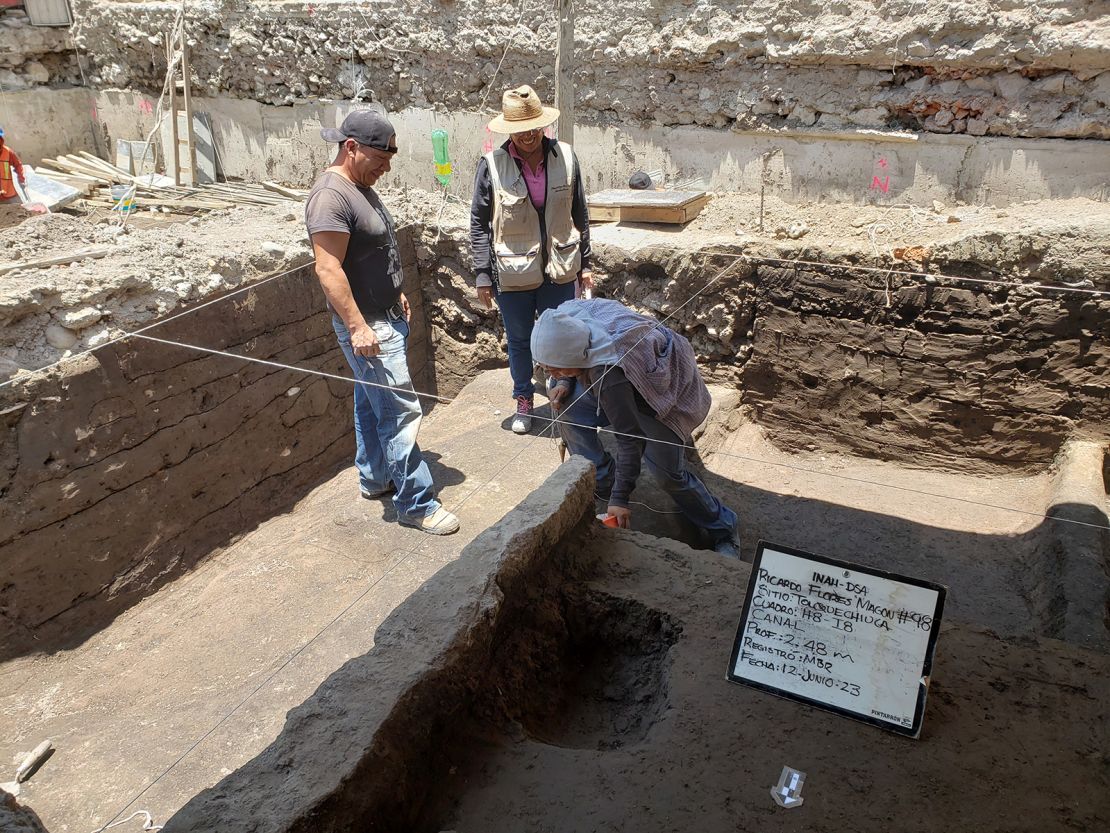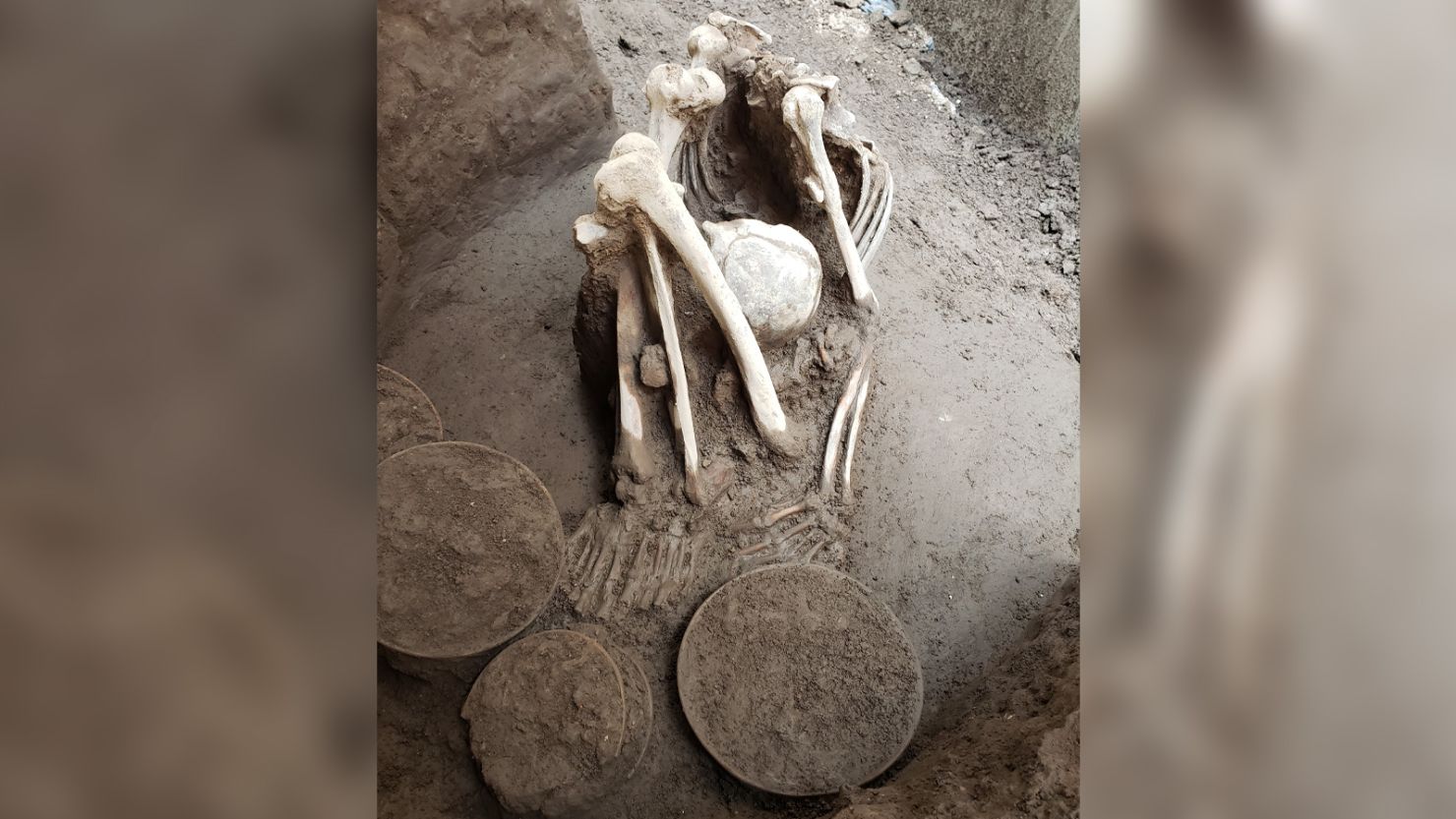Archaeologists have uncovered a 1,500-year-old Teotihuacan village in Mexico City, complete with large concentrations of ceramics and three human burials, Mexico’s National Institute of History and Anthropology has announced.
Excavations between March and June unearthed several remnants of buildings within the settlement, including drainage channels, holes for posts, floors, stone lines and a well.
The bodies of one child and two adults were discovered alongside a series of polished bowls with a ring-shaped base in the Teotihuacan style.
From its center of power in Teotihuacan – located about 50 kilometers (31 miles) northeast of present day Mexico City – the eponymous civilization exerted an enormous influence over Mesoamerica at its height in the 6th century, exercising an even greater influence than the later Aztec empire.
Using ceramic evidence, experts dated the village to around 450-650, around the same date as the height of Teotihuacan influence.
Archaeologist Francisco González Rul had initially reported the settlement between 1960 and 1964, but these new findings “consolidated” and “demonstrated” its existence, said excavation leaders Juan Carlos Campos Varela and Mara Abigail Becerra Amezcua in a statement.
González Rul had proposed that the village likely contained fisherman-gatherers who used the resources of Lake Texcoco – a formerly large lake that now occupies a small area after being artificially drained in the 17th century.

The excavation supported this hypothesis, but newly discovered artifacts suggest that the village also sustained artisanal production of ceramics “since several fragments of solid and articulated modeled figurines, green stone objects, shell, funerary offerings and various obsidian and flint projectile points were found,” Campos Varela and Becerra Amezcua added.
Due to the presence of such artifacts, archaeologists believe that the rural village must have had trade links with other Teotihuacan settlements on the shore of Lake Texcoco.
Excavations also revealed the settlement was later occupied by the Mexica people, plus communities in the 18th, 19th and 20th centuries.
Archaeologists identified the Mexica occupation by the presence of two channels which both seemed to have chinampería spaces – a form of floating fields on a shallow lake widely used by them and artificially built up, in this case by a headless seated sculpture, complete and semi-complete objects, as well as a layer of small slabs and stones.



